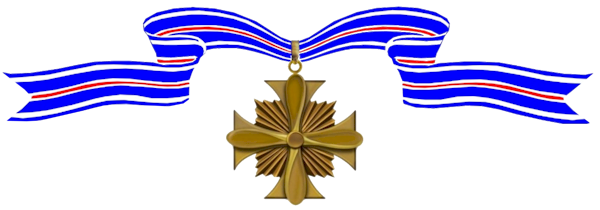Frederick Ashworth graduated from the U.S. Naval Academy at Annapolis, Class of 1933. He retired as a U.S. Navy Vice Admiral.
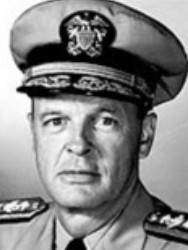
–
Born:
,
Home:
,
Buried:
,
Cemetery:
Awards Received
-
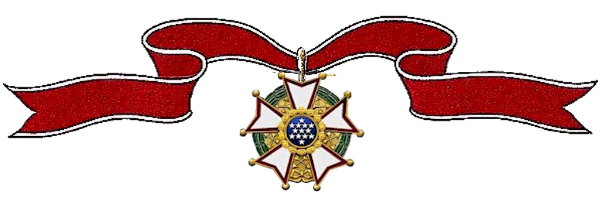
Legion of Merit
-

Legion of Merit
-
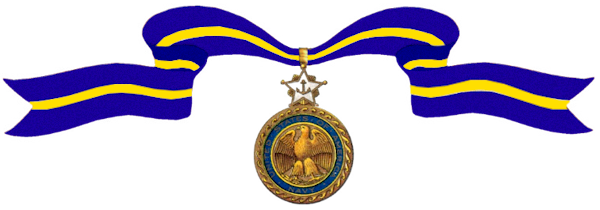
Navy Distinguished Service Medal
-

Navy Distinguished Service Medal
-
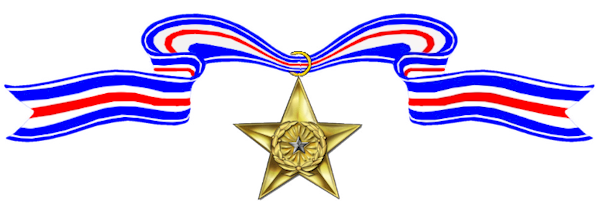
Silver Star
-
Legion of Merit
Service:
United States NavyRank:
CaptainAction Date:
February 7, 1946 – October 31, 1946
Commander JTF ONE: Serial 434A (October 31, 1946)The President of the United States of America takes pleasure in presenting a Gold Star in lieu of a Second Award of the Legion of Merit to Captain Frederick Lincoln Ashworth (NSN: 0-72354), United States Navy, for exceptionally meritorious conduct in the performance of outstanding services to the Government of the United States as Chief of Staff to Commander Task Group 1.1, Joint Task Force ONE, during the period 7 February 1946 to 31 October 1946. With outstanding initiative, vision and professional ability, Captain Ashworth participated in the organization of both the military and technical staff of Joint Task Force ONE from its inception. He also made major contributions to the basic planning of the operation including the selection of Bikini Atoll as the site of the tests. As the operations proceeded Captain Ashworth’s knowledge, background, initiative and good judgment enabled him to make major contributions to the effective coordination of the work of diverse military and civilian groups, particularly those involved in the preparation and air and underwater deliver of the atomic bombs. His outstanding service and performance of duty were at all times in keeping with the highest traditions of the United States Naval Service.
-
Legion of Merit

Chief of Naval Operations: Serial 4903 (October 17, 1945)The President of the United States of America takes pleasure in presenting the Legion of Merit to Commander Frederick Lincoln Ashworth (NSN: 0-72354), United States Navy, for exceptionally meritorious conduct in the performance of outstanding services to the Government of the United States in connection with the development of the greatest military weapon of all time, the atomic bomb. Joining the Atomic Bomb Project in November 1944, Commander Ashworth was assigned the duties of supervising and coordinating field tests in which facsimiles of the weapon were dropped from B-29 aircraft. Thoroughly understanding the principles and functions of intricate and complicated mechanisms, he was able to make sure that no time was wasted and the maximum information gained, both as to the components and as to the technique of delivery. Serving with intelligence, resourcefulness and devotion to duty, Commander Ashworth inspired the full confidence of all of the organizations and individuals concerned in the tests and insured the complete cooperation which was essential to achieve results in the time available. As a result of his successful fulfillment of this exacting and important assignment, he acted as representative of General Groves in the historic deliver of the second atomic bomb on Nagasaki, 9 August 1945. Commander Ashworth’s leadership, professional skill and distinctive performance of duty throughout the test and development of this project were in keeping with the highest traditions of the United States Naval Service.
-
Navy Distinguished Service Medal

All Hands (January 1969)(Citation Needed) – SYNOPSIS: Vice Admiral Frederick Lincoln Ashworth (NSN: 0-72354), United States Navy, was awarded a Gold Star in lieu of a Second Award of the Navy Distinguished Service Medal for exceptionally meritorious and distinguished service in a position of great responsibility to the Government of the United States as Deputy Commander in Chief, U.S. Atlantic Fleet, and as Chief of Staff to the Commander in Chief Atlantic, Commander in Chief U.S. Atlantic Fleet and Commander in Chief Western Atlantic Area, from April 1967 to September 1968. His singularly distinctive accomplishments and his dedicated contributions in the service of his country reflect the highest credit upon himself and were in keeping with the highest traditions of the United States Naval Service.
-
Navy Distinguished Service Medal

All Hands (September 1967)(Citation Needed) – SYNOPSIS: Vice Admiral Frederick Lincoln Ashworth (NSN: 0-72354), United States Navy, was awarded the Navy Distinguished Service Medal for exceptionally meritorious and distinguished service in a position of great responsibility to the Government of the United States as Commander, SIXTH Fleet, from May 1966 to March 1967. His singularly distinctive accomplishments and his dedicated contributions in the service of his country reflect the highest credit upon himself and were in keeping with the highest traditions of the United States Naval Service.
-
Silver Star

Headquarters, 20th Air Force, General Orders No. 68 (September 19, 1945)The President of the United States of America, authorized by Act of Congress July 9, 1918, takes pleasure in presenting the Silver Star (Army Award) to Commander Frederick Lincoln Ashworth (NSN: 0-72354), United States Navy, for gallantry in action while engaged in aerial flight against the Japanese Empire on 9 August 1945, from a base in the Mariana Islands. Commander Ashworth was Senior Military Technical Observer on a B-29 aircraft carrying the second atomic bomb to be employed in the history of warfare. After the Superfortress was well away from its island base, Commander Ashworth personally entered the bomb bay to fuze the atomic bomb. Following a circuitous course to the Japanese Empire in order to avoid heavy weather, they arrived over the primary target with low reserves of gasoline. Despite this and the possibility of damage from anti-aircraft fire or enemy fighters, he advised that an effort be made to bomb the primary target and the big plane remained over the city for nearly one hour, making three attempts to drop the new bomb, all failing because smoke obscured the target. Little more than enough fuel remained for Superfortress to reach the nearest emergency landing field but they set a course directly across the Empire, disregarding the dangers of flak and enemy fighter attacks, and under Commander Ashworth’s direction released the bomb on the secondary target, the important industrial city of Nagasaki. The tremendous blast which followed destroyed a square mile of the city and played an important part in bringing forth an offer of surrender from the Japanese within 24 hours. Although the B-29 was shaken by the detonation, they proceeded to the emergency field and landed with fuel tanks virtually empty. Commander Ashworth distinguished himself by his high degree of skill in directing work with the atomic bomb, the great personal risk he took in placing the powder charge in the bomb during flight and attack despite unfavorable conditions. His actions reflect great credit on himself and the United States Naval Service.


